
 |
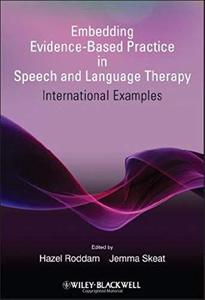 Embedding Evidence-Based Practice in Speech and Language Therapy: International Examples By 2010 | 243 Pages | ISBN: 0470743298 | PDF | 5 MB Like all health professionals, speech and language therapists (SLTs) need to keep themselves up-to-date with the research evidence base that is relevant to their field of practice and be able to show how this contributes to their clinical decision-making. However, it is not always clear to practitioners how evidence-based practice (EBP) can be properly embedded in their day-to-day activities. In this valuable book, Hazel Roddam and Jemma Skeat present a wealth of instructive examples by SLT contributors from around the world, showing how clinicians, educators, and researchers have risen to the EBP challenge. Embedding evidence-based practice in speech and language therapy showcases the creative ways that SLTs are developing knowledge and skills for EBP, creating contexts that support the use of evidence in practice, and working towards making evidence easily accessible and usable. It includes real-life examples of how SLTs have encountered a clinical problem or situation and have accessed and used the evidence within their day-to-day practice. The contributors come from a wide range of work settings, from services situated within large organizations to those in independent practice, and represent a range of clinical areas, from paediatric to adult and across speech, language, voice, fluency, Augmentative and Alternative Communication (AAC), and dysphagia. This book is written for an audience of clinical practitioners, at any stage of their career, and is additionally a valuable resource for SLT students and lecturers.Content: Chapter 1 Purpose of this Book (pages 1-8): Dr Hazel Roddam and Dr Jemma SkeatChapter 2 What does EBP mean to Speech and Language Therapists? (pages 9-15): Dr Hazel Roddam and Dr Jemma SkeatChapter 3 What are the Barriers to EBP in Speech and Language Therapy? (pages 16-24): Dr Jemma Skeat and Dr Hazel RoddamChapter 4 Teaching Undergraduates to become Critical and Effective Clinicians (pages 25-35): Bea SpekChapter 5 Promoting Clinical Effectiveness with Postgraduate Students (pages 36-42): Paula Leslie and James L. CoyleChapter 6 Clinical Effectiveness: not just a Journal Club (pages 43-50): Satty Boyes and Gina SutcliffeChapter 7 Using Evidence?Based Practice in Supervision (pages 51-58): Hannah CrawfordChapter 8 Meeting Skill Gaps and Training Needs (Commentary on Section Two) (pages 59-62): Dr Hazel Roddam and Dr Jemma SkeatChapter 9 The Role of Leadership in Creating Evidence?Based Services (pages 63-71): Karen DaviesChapter 10 Supporting Staff to Balance Caseload Demands (pages 72-78): Sean PertChapter 11 A Model of Clinician?Researcher Collaboration in a Community Setting (pages 79-86): Parimala RaghavendraChapter 12 Valuing Evidence?Based Practice in the Clinical Setting - a Showcase Event (pages 87-93): Sian E. Davies and Tracey C. DeanChapter 13 Launching and Sustaining an Evidence?Based Highly Specialist Service (pages 94-100): Sheena Round and Sarah BeazleyChapter 14 Strategic Approaches to Promoting the Value of EBP (Commentary on Section Three) (pages 101-104): Dr Hazel Roddam and Dr Jemma SkeatChapter 15 The Importance of Listening to the Views of Clients (pages 105-113): Pirkko RautakoskiChapter 16 Developing Evidence?Based Clinical Resources (pages 114-121): Russell Thomas CrossChapter 17 Creating Evidence?Based Policy to Facilitate Evidence?Based Practice (pages 122-128): Angie DobbrickChapter 18 Building and Supporting a Multi?Stream Clinical Evidence?Based Practice Network (pages 129-138): Tracy Kelly, Rachel Miles Kingma and Rachelle RobinsonChapter 19 Equipping Ourselves as Evidence?Based Practitioners: Tools and Resources for EBP (Commentary on Section Four) (pages 139-142): Dr Jemma Skeat and Dr Hazel RoddamChapter 20 A Community?based Project in Rural Sri Lanka (pages 143-150): Shalini Felicity GomeszChapter 21 Supporting Communicative Participation for Children with Complex Communication needs: how the Evidence Contributes to the Journey (pages 151-156): Angela Guidera, Catherine Olsson and Parimala RaghavendraChapter 22 Evidence?Based Diagnosis of Speech, Language and Swallowing following Paediatric Stroke (pages 157-162): Angela MorganChapter 23 Working with a Dysfluent Three?Year?Old from a Bilingual Family (pages 163-167): Patricia OksenbergChapter 24 Supporting Parents and Teachers in Managing Autism: an Example of an Evidence?Informed Model for Assessment and Intervention (pages 168-173): Anneli YlihervaChapter 25 Communication Therapy on the Stroke Care Unit (pages 174-178): Daniel De Stefanis and Gracie TomoloChapter 26 Working with Psychogenic Dysphonia (pages 179-183): Beth Higginbottom and Linda HouseChapter 27 Implementation of a free Fluid Protocol in an Aged Care Facility (pages 184-188): Amanda Scott and Leora BenjaminChapter 28 Prosody Intervention for Children (pages 189-194): Christina SamuelssonChapter 29 Supporting Evidence?Based Practice for Students on Placement: Making Management Decisions for Clients with down Syndrome (pages 195-200): Ruth MillerChapter 30 Bridging the Research-Clinical Divide through Postgraduate Research Training (pages 201-205): Georgia D. BertouChapter 31 Many Roads Lead to EBP (Commentary on Section Five) (pages 206-210): Dr Jemma Skeat and Dr Hazel RoddamChapter 32 Wider Consultation on Embedding EBP in SLT Practice (pages 211-221): Dr Hazel Roddam and Dr Jemma SkeatChapter 33 The Role of Reflective Practice in Supporting EBP (pages 222-229): Dr Jemma Skeat and Dr Hazel RoddamChapter 34 Embedding EBP: Future Directions (pages 230-231): Dr Hazel Roddam and Dr Jemma Skeat
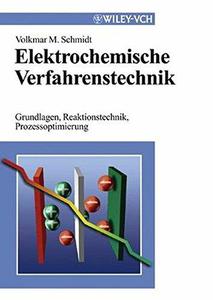 Elektrochemische Verfahrenstechnik: Grundlagen, Reaktionstechnik, Proze?optimierung By Professor Dr. Volkmar M. Schmidt(auth.) 2003 | 683 Pages | ISBN: 3527299580 | PDF | 5 MB "Bei dieser Monographie handelt es sich um ein ?erst sorgf?ig gestaltetes Buch ... Der angenehme Schreibstil macht die Lektre zum Genuss bis zur letzten Seite." Siegfried Waldvogel GDCh Nachrichten der ChemieContent: Chapter 1 Einfuhrung (pages 1-32): Chapter 2 Elektrochemische Grundlagen (pages 33-133): Chapter 3 Transportprozesse in der elektrochemischen Verfahrenstechnik (pages 135-229): Chapter 4 Elektrochemische Reaktionstechnik (pages 231-352): Chapter 5 Verfahrenstechnik (pages 353-399): Chapter 6 Elektrolyseverfahren (pages 401-538): Chapter 7 Elektrochemische Energietechnik (pages 539-644): 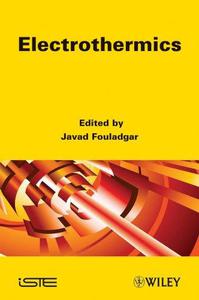 Electrothermics By 2012 | 289 Pages | ISBN: 1848212429 | PDF | 22 MB This book concerns the analysis and design of induction heating of poor electrical conduction materials.Some innovating applications such as inductive plasma installation or transformers, thermo inductive non-destructive testing and carbon-reinforced composite materials heating are studied. Analytical, semi-analytical and numerical models are combined to obtain the best modeling technique for each case. Each model has been tested with experimental results and validated. The principal aspects of a computational package to solve these kinds of coupled problems are described.In the first chapter, the mathematical tools for coupled electromagnetic and thermal phenomena are introduced. In Chapter 2, these tools are used to analyze a radio frequency inductive plasma installation. The third chapter describes the methodology of designing a low frequency plasma transformer. Chapter 4 studies the feasibility of the thermo inductive technique for non-destructive testing and the final chapter is dedicated to the use of induction heating in the lifecycle of carbon-reinforced composite materials.Contents1. Thermal and Electromagnetic Coupling, Javad Fouladgar, Didier Trichet and Brahim Ramdane.2. Simplified Model of a Radiofrequency Inductive Thermal Plasma Installation, Javad Fouladgar and Jean-Pierre Descriptioneau.3. Design Methodology of A Very Low-Frequency Plasma Transformer, Javad Fouladgar and Souri Mohamed Mimoune.4. Non Destructive Testing by Thermo-Inductive Method, Javad Fouladgar, Brahim Ramdane, Didier Trichet and Tayeb Saidi.5. Induction Heating of Composite Materials, Javad Fouladgar, Didier Trichet, Samir Bensaid and Guillaume WasselynckContent: Chapter 1 Thermal and Electromagnetic Coupling (pages 1-38): Javad Fouladgar, Didier Trichet and Brahim RamdaneChapter 2 Simplified Model of a Radiofrequency Inductive Thermal Plasma Installation (pages 39-84): Javad Fouladgar and Jean?Pierre DescriptioneauChapter 3 Design Methodology of A Very Low?Frequency Plasma Transformer (pages 85-116): Javad Fouladgar and Souri Mohamed MimouneChapter 4 Non Destructive Testing by Thermo?Inductive Method (pages 117-193): Javad Fouladgar, Brahim Ramdane, Didier Trichet and Tayeb SaidiChapter 5 Induction Heating of Composite Materials (pages 195-271): Javad Fouladgar, Didier Trichet, Samir Bensaid and Guillaume Wasselynck 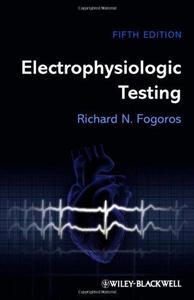 Electrophysiologic Testing, Fifth Edition By Richard N. Fogoros(auth.) 2012 | 343 Pages | ISBN: 0470674237 | PDF | 2 MB When you need to know how to order, perform and evaluate core EP tests and optimize patient care, turn to the one, updated resource you can count on for clear and accessible guidance: Electrophysiologic Testing, 5th Edition. Electrophysiological Testing has become the most trusted resource for those learning or mastering EP testing, from students, nurse and technicians to residents, cardiology fellows, primary care physicians and cardiologists. Dr Fogoros's singular approach clarifies the role of electrophysiology in the evaluation of cardiac arrhythmias and provides clear, easy-to-understand summaries of complex topics. The result is a book that provides just what you need - not more - to successfully test for abnormal heart rhythms using today's most common devices and techniques.What's new?Completely revised to update the data from recent randomized trials on ablation, ICDs and CRT Expanded information on the CARTO system A chapter on dysautomia Plus an all-new section of self-assessment questions to help you master essential concepts and test your recall of key information Content: Chapter 1 The Cardiac Electrical System (pages 1-12): Chapter 2 Abnormal Heart Rhythms (pages 13-22): Chapter 3 Treatment of Arrhythmias (pages 23-33): Chapter 4 Principles of the Electrophysiology Study (pages 35-59): Chapter 5 The Electrophysiology Study in the Evaluation of Bradycardia: The SA Node, AV Node, and His-Purkinje System (pages 60-101): Chapter 6 The Electrophysiology Study in the Evaluation of Supraventricular Tachyarrhythmias (pages 102-159): Chapter 7 The Electrophysiology Study in the Evaluation and Treatment of Ventricular Arrhythmias (pages 160-209): Chapter 8 Transcatheter Ablation: Therapeutic Electrophysiology (pages 210-257): Chapter 9 Cardiac Resynchronization: Pacing Therapy for Heart Failure (pages 258-272): Chapter 10 The Evaluation of Syncope (pages 273-284): Chapter 11 Electrophysiologists and Dysautonomia (pages 285-298): Chapter 12 Electrophysiologic Testing in Perspective: The Evaluation and Treatment of Cardiac Arrhythmias (pages 299-309): 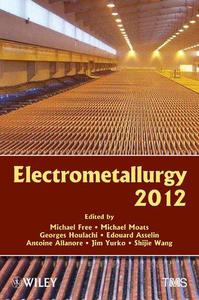 Electrometallurgy 2012 By 2012 | 253 Pages | ISBN: 1118291174 | PDF | 9 MB Proceedings of a symposium sponsored by The Metallurgy and Materials Society of CIM and the Hydrometallurgy and Electrometallurgy Committee of the Extraction and Processing Division of TMS (The Minerals, Metals & Materials Society)Held during the TMS 2012 Annual Meeting & Exhibition Orlando, Florida, USA, March 11-15, 2012Content:
 Electromagnetic Metamaterials: Transmission Line Theory and Microwave Applications: The Engineering Approach By Christophe Caloz, Tatsuo Itoh(auth.) 2005 | 366 Pages | ISBN: 0471669857 | PDF | 12 MB Electromagnetic metamaterials-from fundamental physics to advanced engineering applications This book presents an original generalized transmission line approach associated with non-resonant structures that exhibit larger bandwidths, lower loss, and higher design flexibility. It is based on the novel concept of composite right/left-handed (CRLH) transmission line metamaterials (MMs), which has led to the development of novel guided-wave, radiated-wave, and refracted-wave devices and structures. The authors introduced this powerful new concept and are therefore able to offer readers deep insight into the fundamental physics needed to fully grasp the technology. Moreover, they provide a host of practical engineering applications. The book begins with an introductory chapter that places resonant type and transmission line metamaterials in historical perspective. The next six chapters give readers a solid foundation in the fundamentals and practical applications: * Fundamentals of LH MMs describes the fundamental physics and exotic properties of left-handed metamaterials * TL Theory of MMs establishes the foundations of CRLH structures in three progressive steps: ideal transmission line, LC network, and real distributed structure * Two-Dimensional MMs develops both a transmission matrix method and a transmission line method to address the problem of finite-size 2D metamaterials excited by arbitrary sources * Guided-Wave Applications and Radiated-Wave Applications present a number of groundbreaking applications developed by the authors * The Future of MMs sets forth an expert view on future challenges and prospects This engineering approach to metamaterials paves the way for a new generation of microwave and photonic devices and structures. It is recommended for electrical engineers, as well as physicists and optical engineers, with an interest in practical negative refractive index structures and materials.Content: Chapter 1 Introduction (pages 1-26): Chapter 2 Fundamentals of LH MTMs (pages 27-58): Chapter 3 TL Theory of MTMs (pages 59-132): Chapter 4 Two?Dimensional MTMs (pages 133-191): Chapter 5 Guided?Wave Applications (pages 192-260): Chapter 6 Radiated?Wave Applications (pages 261-315): Chapter 7 The Future of MTMs (pages 316-346): 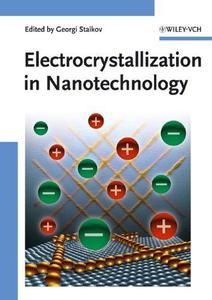 Electrocrystallization in Nanotechnology By 2007 | 279 Pages | ISBN: 3527315152 | PDF | 4 MB Here, the well-known editor in the field of electrocrystallization and his team of excellent international authors guarantee the high quality of the contributions. Clearly structured in two main parts, this book reviews the fundamentals and applications of electrocrystallization processes in nanotechnology. The first part, "Fundamentals" covers the basic concepts of electrocrystallization, computer simulations of low-dimensional metal phase formation, electrodeposition in templates and nanocavities, nanoscale electrocrystallization from ionic liquids, and superconformal electrodeposition of metals. The second part, "Preparation and properties of nanostructures", includes nanostructuring by STM tip induced localized electrocrystallization of metals, fabrication of ordered anodic nanoporous Al2O3 layers and their application, preparation of nanogaps, nanocontacts, nanowires and nanodots by selective electrochemical deposition, as well as electrodeposition of magnetic nanostructures and multilayers
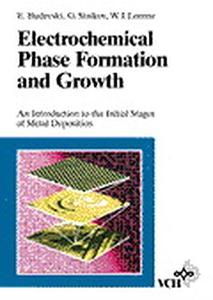 Electrochemical Phase Formation and Growth: An Introduction to the Initial Stages of Metal Deposition By Prof. Dr. E. Budevski, Prof. Dr. G. Staikov, Prof. Dr. W. J. Lorenz(auth.) 1996 | 414 Pages | ISBN: 3527294228 | PDF | 16 MB Electrochemical processes and methods are basic to many important scientific disciplines, materials science and nanotechnology being only two keywords. For the first time in more than twenty years this volume presents a critical survey of the foundations, methodology and applications of electrochemical phase formation and growth processes. Written by a team of three internationally renowned authors, it is an invaluable source of information for all scientists concerned with electrocrystallization of metals or the in-situ characterization of electron-conducting surfaces. Not only the numerous illustrations (partly in colour) but also the vast number of references covering the literature up to and including 1995 make this volume indispensable for every laboratory working in electrochemical or materials science. Content: Chapter 1 Fundamentals of Electro?crystallization of Metals (pages 1-7): Chapter 2 Crystalline Metal Surfaces (pages 9-39): Chapter 3 Underpotential Deposition of Metals ? 2D Phases (pages 41-148): Chapter 4 Initial Stages of Bulk Phase Formation (pages 149-199): Chapter 5 Growth of Crystalline Faces (pages 201-261): Chapter 6 Metal Deposits and Surface Structuring and Modification (pages 263-313): Chapter 7 Outlook (page 315): Chapter 8 Appendices (pages 317-342):
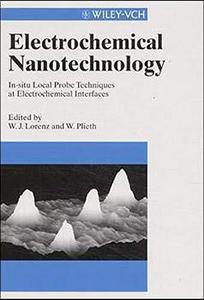 Electrochemical Nanotechnology: In-situ Local Probe Techniques at Electrochemical Interfaces By 1998 | 328 Pages | ISBN: 3527295208 | PDF | 8 MB A new window to local studies of interface phenomena at solid state surfaces has been opened by the development of local probe techniques such as Scanning Tunneling Microscopy (STM) or Atomic Force Microscopy (AFM) and related methods during the past fifteen years. The in-situ application of local probe methods in different systems belongs to modern nanotechnology and has two aspects: an analytical aspect and a preparative aspect. The first aspect covers the application of the local probe methods to characterize thermodynamic, structural and dynamic properties of solid state surfaces and interfaces and to investigate local surface reactions. Two methods which are still in the beginning of their development represent the second aspect: tip and cantilever. They can be used to form defined nano-objects such as molecular or atomic clusters, quantum dots etc. as well as to structure or modify solid state surfaces in the nanometer range. This IUPAC monograph is a comprehensive treatment of both aspects and presents the current state of knowledge. It is written for scientists active in the area of nanotechnology. Content: Chapter 1 Local Probing of Electrochemical Processes at Non?ideal Electrodes (pages 1-12): E. Ammann, P. I. Oden and H. SiegenthalerChapter 2 Electrochemistry and Nanotechnology (pages 13-25): G. Staikov and W. J. LorenzChapter 3 Imaging of Electrochemical Processes and Biological Macromolecular Adsorbates by in?situ Scanning Tunneling Microscopy (pages 27-44): Jens E. T. Andersen, Jens Ulstrup and Per MollerChapter 4 Beyond the Landscapes: Imaging the Invisible (pages 45-55): A. A. Kornyshev and M. SumetskiiChapter 5 Roughness Kinetics and Mechanism Derived from the Analysis of AFM and STM Imaging Data (pages 56-71): R. C. Salvarezza and A. J. ArviaChapter 6 Electrodes with a defined mesoscopic structure (pages 73-86): U. Stimming and R. VogelChapter 7 In?situ Stress Measurements at the Solid/Liquid Interface Using a Micromechanical Sensor (pages 87-99): T. A. Brunt, E. D. Chabala, T. Rayment, S. J. O'Shea and M. E. WellandChapter 8 Surface structure and electrochemistry: new insight by scanning tunneling microscopy (pages 101-112): Giovanni Aloisi, Massimiliano Cavallini and Rolando GuidelliChapter 9 STM and AFM Studies of the Electrified Solid?Liquid Interface: Monolayers, Multilayers, and Organic Transformations (pages 112-124): Andrew A. Gewirth and Brian K. NieceChapter 10 Scanning Probe Microscopy Studies of Molecular Redox Films (pages 125-136): James E. Hudson and Hector D. AbrunaChapter 11 New Aspects of Iodine?modified Single?crystal Electrodes (pages 137-148): Kingo ItayaChapter 12 The growth and the surface properties of polypyrrole on single crystal graphite electrodes as studied by in?situ electrochemical scanning probe microscopy (pages 149-157): Chr. Froeck, A. Bartl and L. DunschChapter 13 Nucleation and growth at metal electrode surfaces (pages 158-170): O. M. Magnussen, F. Moller, M. R. Vogt and R. J. BehmChapter 14 STM Study of Electrodeposition of Strained?Layer Metallic Superlattices (pages 171-184): T. P. MoffatChapter 15 STM Studies of Thin Anodic Oxide Layers (pages 184-197): Philippe Marcus and Vincent MauriceChapter 16 Local Probing of Electrochemical Interfaces in Corrosion Research (pages 199-213): A. Schreyer, T. Suter, L. Eng and H. BohniChapter 17 Morphology and Nucleation of Ni?TiO2 LIGA layers (pages 215-224): M. Strobel, U. Schmidt, K. Bade and J. HalbritterChapter 18 SPM Investigations on Oxide?covered Titanium Surfaces: Problems and Possibilities (pages 225-239): C. Kobusch and J. W. SchultzeChapter 19 Electrochemical surface processing of semiconductors at the atomic level (pages 240-252): P. Allongue and C. Henry de VilleneuveChapter 20 In?situ Electrochemical AFM Study of Semiconductor Electrodes in Electrolyte Solutions (pages 253-265): K. Uosaki and M. KoinumaChapter 21 In?situ STM and electrochemical UHV technique: Complementary, Noncompeting Techniques (pages 266-276): M. P. Soriaga, K. Itaya and J. L. StickneyChapter 22 Growth morphology and molecular orientation of additives in electrocrystallization studied by surface?enhanced Raman spectroscopy (pages 277-289): B. Reents and W. PliethChapter 23 Instrumental Design and Prospects for NMR?Electrochemistry (pages 291-302): James B. Day, Jianjun Wu, Eric Oldfield and Andrzej Wieckowski 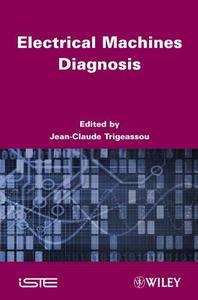 Electrical Machines Diagnosis By Jean?Claude Trigeassou(auth.) 2011 | 344 Pages | ISBN: 1848212631 | PDF | 16 MB Monitoring and diagnosis of electrical machine faults is a scientific and economic issue which is motivated by objectives for reliability and serviceability in electrical drives. This book provides a survey of the techniques used to detect the faults occurring in electrical drives: electrical, thermal and mechanical faults of the electrical machine, faults of the static converter and faults of the energy storage unit. Diagnosis of faults occurring in electrical drives is an essential part of a global monitoring system used to improve reliability and serviceability. This diagnosis is performed with a large variety of techniques: parameter estimation, state observation, Kalman filtering, spectral analysis, neural networks, fuzzy logic, artificial intelligence, etc. Particular emphasis in this book is put on the modeling of the electrical machine in faulty situations. Electrical Machines Diagnosis presents original results obtained mainly by French researchers in different domains. It will be useful as a guideline for the conception of more robust electrical machines and indeed for engineers who have to monitor and maintain electrical drives. As the monitoring and diagnosis of electrical machines is still an open domain, this book will also be very useful to researchers.Content: Chapter 1 Faults in Electrical Machines and their Diagnosis (pages 1-22): Chapter 2 Modeling Induction Machine Winding Faults for Diagnosis (pages 23-68): Chapter 3 Closed?Loop Diagnosis of the Induction Machine (page 0): Chapter 4 Induction Machine Diagnosis Using Observers (pages 93-129): Chapter 5 Thermal Monitoring of the Induction Machine (pages 131-166): Chapter 6 Diagnosis of the Internal Resistance of an Automotive Lead?acid Battery by the Implementation of a model Invalidation?based Approach (pages 167-192): Chapter 7 Electrical and Mechanical Faults Diagnosis of Induction Machines Using Signal Analysis (pages 193-225): Chapter 8 Fault Diagnosis of the Induction Machine by Neural Networks (pages 227-270): Chapter 9 Faults Detection and Diagnosis in a Static Converter (pages 271-319): |